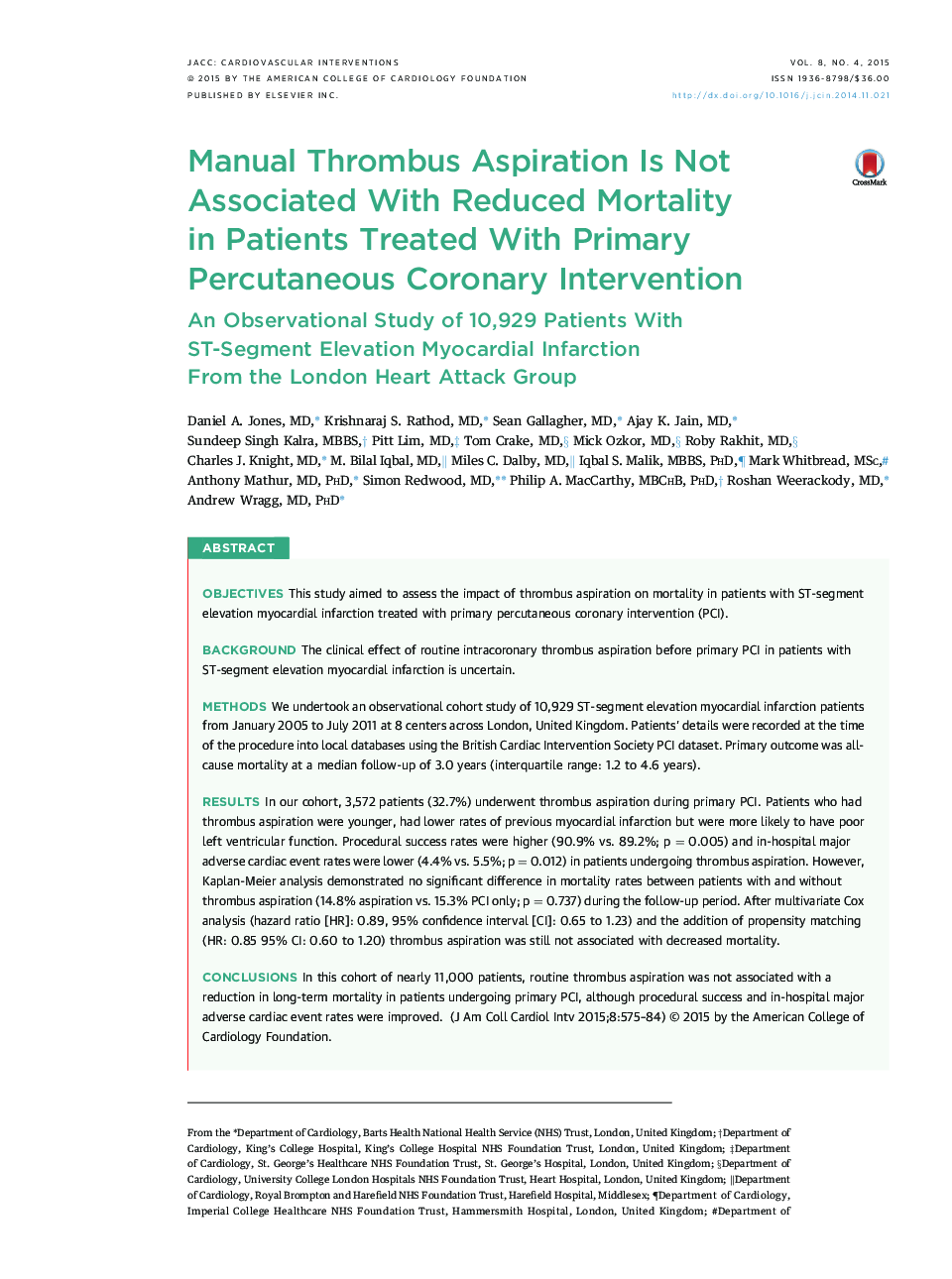| Article ID | Journal | Published Year | Pages | File Type |
|---|---|---|---|---|
| 2939751 | JACC: Cardiovascular Interventions | 2015 | 10 Pages |
ObjectivesThis study aimed to assess the impact of thrombus aspiration on mortality in patients with ST-segment elevation myocardial infarction treated with primary percutaneous coronary intervention (PCI).BackgroundThe clinical effect of routine intracoronary thrombus aspiration before primary PCI in patients with ST-segment elevation myocardial infarction is uncertain.MethodsWe undertook an observational cohort study of 10,929 ST-segment elevation myocardial infarction patients from January 2005 to July 2011 at 8 centers across London, United Kingdom. Patients’ details were recorded at the time of the procedure into local databases using the British Cardiac Intervention Society PCI dataset. Primary outcome was all-cause mortality at a median follow-up of 3.0 years (interquartile range: 1.2 to 4.6 years).ResultsIn our cohort, 3,572 patients (32.7%) underwent thrombus aspiration during primary PCI. Patients who had thrombus aspiration were younger, had lower rates of previous myocardial infarction but were more likely to have poor left ventricular function. Procedural success rates were higher (90.9% vs. 89.2%; p = 0.005) and in-hospital major adverse cardiac event rates were lower (4.4% vs. 5.5%; p = 0.012) in patients undergoing thrombus aspiration. However, Kaplan-Meier analysis demonstrated no significant difference in mortality rates between patients with and without thrombus aspiration (14.8% aspiration vs. 15.3% PCI only; p = 0.737) during the follow-up period. After multivariate Cox analysis (hazard ratio [HR]: 0.89, 95% confidence interval [CI]: 0.65 to 1.23) and the addition of propensity matching (HR: 0.85 95% CI: 0.60 to 1.20) thrombus aspiration was still not associated with decreased mortality.ConclusionsIn this cohort of nearly 11,000 patients, routine thrombus aspiration was not associated with a reduction in long-term mortality in patients undergoing primary PCI, although procedural success and in-hospital major adverse cardiac event rates were improved.
